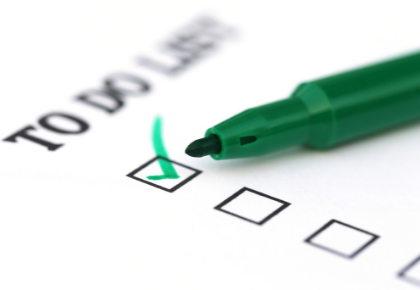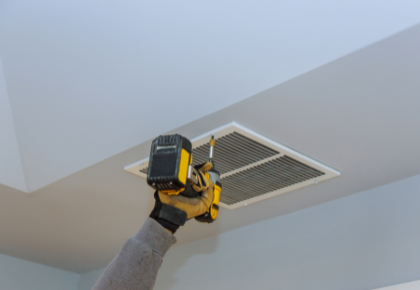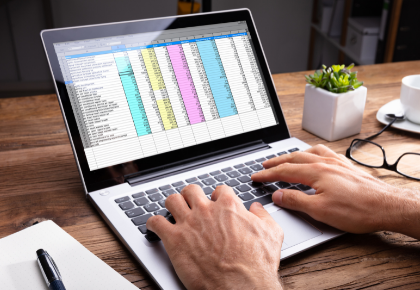Demystifying Maintenance and Repair Roles for Residents in Your Condo Corporation
Download your Responsibility Matrix
How well do unit owners in your community understand the condo maintenance responsibilities? Does your board frequently need to explain to residents which repairs are their responsibility and which ones are the condo corporation’s job to do?

You might think that responsibilities for maintenance, repairs and replacements would be straightforward enough – what’s inside the condo unit is the unit owner’s, and what’s outside is the corporation’s. However, it’s not always that clear cut in a condo building. Some areas can be confusing to residents.
Even board members sometimes misunderstand how condo maintenance and repair responsibilities are divided. They may pay for jobs that aren’t the condo corporation’s responsibility or refuse to get work done that is. These errors can lead to unnecessary spending or legal battles for the corporation.
You can avoid potential issues by taking the proactive measures we describe in this article. These recommendations will help make it easier for residents – as well as current and future board members – to understand who is responsible for which maintenance, repair, and replacement jobs in your building.
Become Familiar with (and Teach Residents) Condo Terminology
If you want to communicate with someone, the first thing you must do is to make sure you are speaking a language you both understand. When it comes to condo maintenance, that means that both board members and homeowners need to know the following three terms:
-
Units - These are the individually owned portions of the condo that are designated for residential occupancy.
-
Common elements - These usually consist of all areas other than the units. Common elements include the areas in and around your building(s) that are designated for use by two or more units. Members of the condo corporation own these areas together.
-
Limited common elements - Sometimes referred to as “exclusive-use elements,” these are elements that are located outside an individual unit but that serve only a single unit. Examples of limited common elements include balconies, shutters, heating and cooling units and awnings.
-
Bylaws - Condominium bylaws govern how the condominium corporation runs. These bylaws cover matters such as board of directors (condo board) elections, contributions (condo fees) collection and the passing of rules
Know Applicable Laws and Relevant Policies in Your Condo Corporation’s Bylaws
Your corporation’s bylaws should include definitions of “units,” “common elements” and “limited common elements,” as well as spell out maintenance and repair responsibilities for anything not specifically addressed by Alberta law. These documents should be your go-to source for any questions or disputes. Generally, the unit owner is required to maintain elements that are part of the unit. Under Alberta’s Condominium Property Act, condo corporations have a general duty to repair and maintain all common areas and elements.
Where you’ll usually run into problems is with limited common elements. In some cases, or even just for certain elements, the condo corporation may take responsibility. In other cases, it may be up to the unit owner. It depends on your bylaws.
Amend Your Bylaws if Condo Maintenance and Repair Responsibilities Aren’t Clear
When you find that neither the law nor your bylaws adequately clarify condo maintenance and repair responsibilities, it’s time to amend your documents. If a resident questions the roles, you need to be able to point to something in writing. You don’t want to have to depend on a lawsuit to settle a dispute over who should pay for a repair.

Create a “Responsibility Matrix”
Even well-written bylaws may not have the necessary level of detail that your residents need to know. As a result, your board may still find that it is answering the same condo maintenance and repair questions from residents repeatedly. That’s where a “Responsibility Matrix” can come in handy. This serves as a kind of quick-reference chart that defines who does what in an easy format. It lists the various elements of your property and identifies whether the condo corporation or the unit owner is responsible for its maintenance, repair and/or replacement. To create this document, you can follow these easy steps.

1. Gather all your maintenance-related paperwork
Your bylaws, as well as a recently updated reserve study, should contain most of the information you’ll need. You may also want to reference warranty information for installed equipment and components and for any work that’s been performed by a contractor.
2. Enlist the assistance of your property manager and attorney
It’s important that the information you provide to residents is accurate and doesn’t leave room for misinterpretation. Your property manager will have a good understanding of your documents and the work that goes into maintaining your building.
Your attorney will help protect your corporation from unintentional legal exposure because of something you did or didn’t specify. A disclaimer that the matrix does not represent a comprehensive list of all elements or responsibilities is something your attorney will probably recommend including up front.
3. Draft a preliminary list of maintenance items
Using everything you have collected, make a list of all the elements that require maintenance or repair work, or that will eventually need to be replaced. Label this list “Items” or “Elements.”
4. Specify responsibilities for each item on your list
Next to your list, create a column labeled “Unit Owner” and another column labeled “Condo Corporation.” Put a check mark in each column based on who has responsibility for the item. It’s also a good idea to include an additional column for “Comments” or “Notes” since some of the items or responsibilities may need explanation or have exceptions.
If unit owners and your corporation each have responsibility for different aspects of an element on your list, break that element out into multiple items. For example, perhaps the corporation is responsible for general maintenance of air conditioners, but unit owners are responsible for replacing the filters. You would need to have one item called “Air Conditioner Units” and another one called “Air Conditioner Filters.”
5. Put it all together for a final review
From your draft chart, create a final matrix. Design it to be easy to read. For example, you might want to use a table template, separate columns with lines and add bright colors. Have your attorney and property manager look over the matrix one last time. Be sure to incorporate any suggestions they make. Also put a version number and a date on the final copy. You will likely need to make changes or additions over time, and version numbers and dates can make it easier to keep track.
6. Distribute the final Responsibility Matrix to all residents
Everyone who owns or rents a unit should have a copy of the Responsibility Matrix. Use a variety of channels to announce its availability and distribute it: email, community newsletter, community website and board meetings. Have them available in areas of your building that residents frequent, such as the front desk, fitness center and community room.
If you are working with a good property management company, your condo corporation should have access to property management software that can streamline the digital distribution of the matrix. You can also ask your property manager to help distribute the hard copies around your property.
Clearly defining everyone’s condo maintenance and repair responsibilities within your community may seem a bit tedious at first. However, you’ll be saving your board a lot of time – and headaches – in the long run. Residents will appreciate knowing their responsibilities, too, and many of the disagreements over condo maintenance and repairs will become a thing of the past.